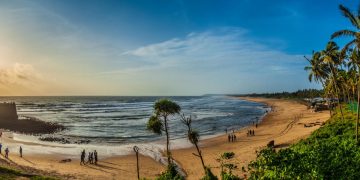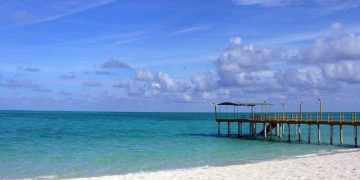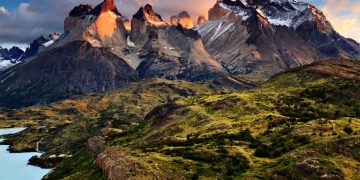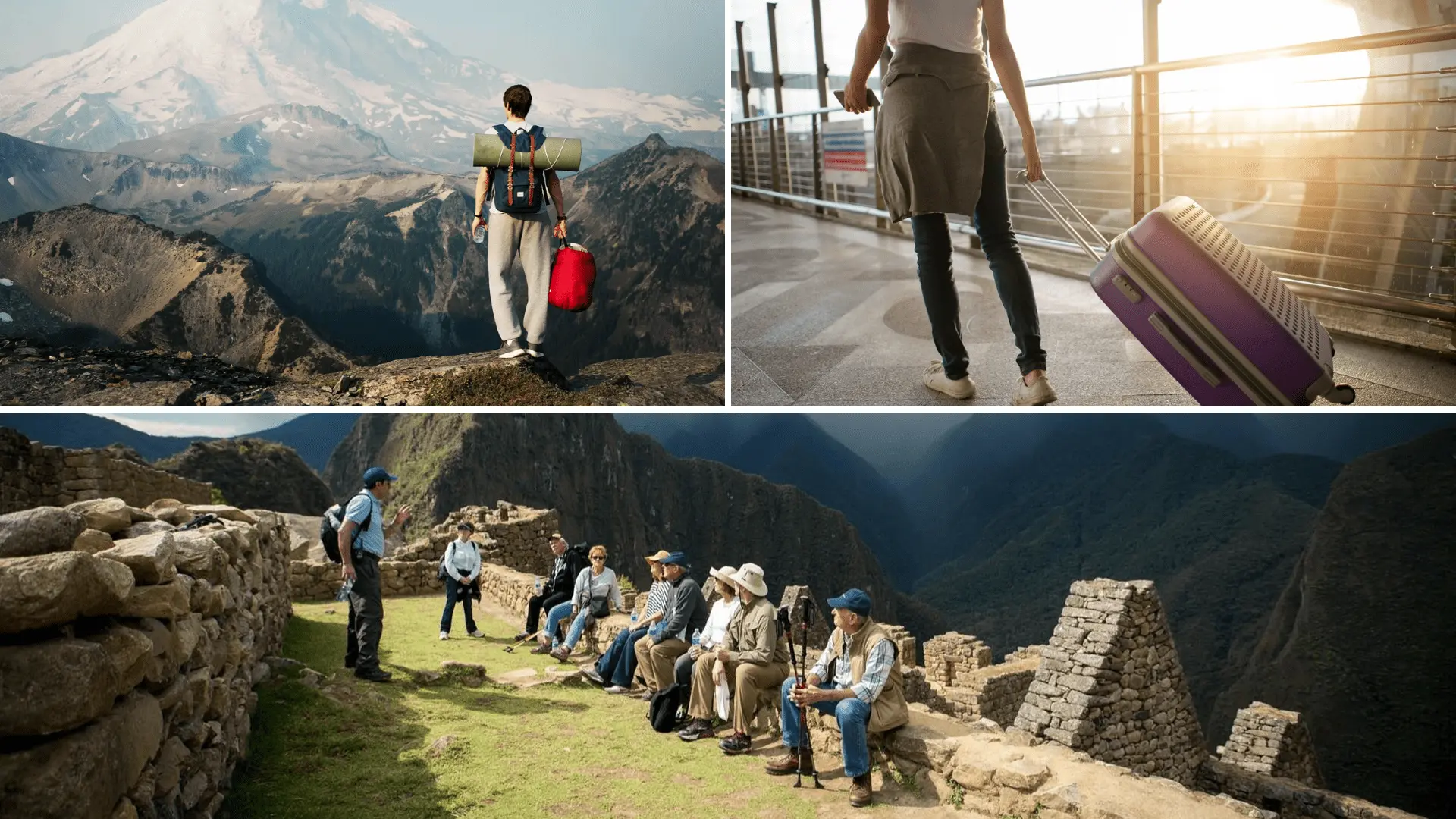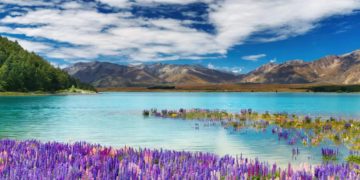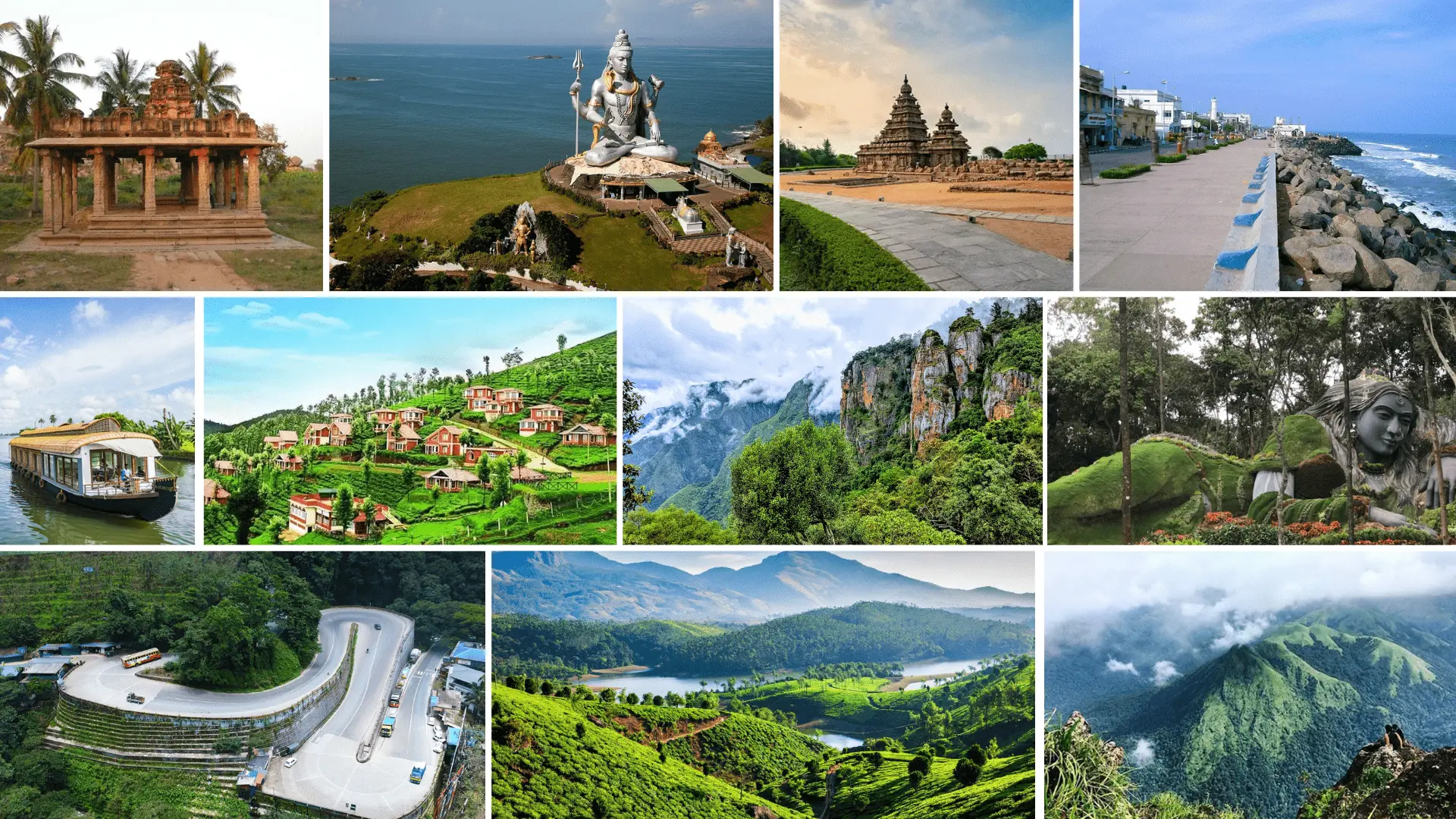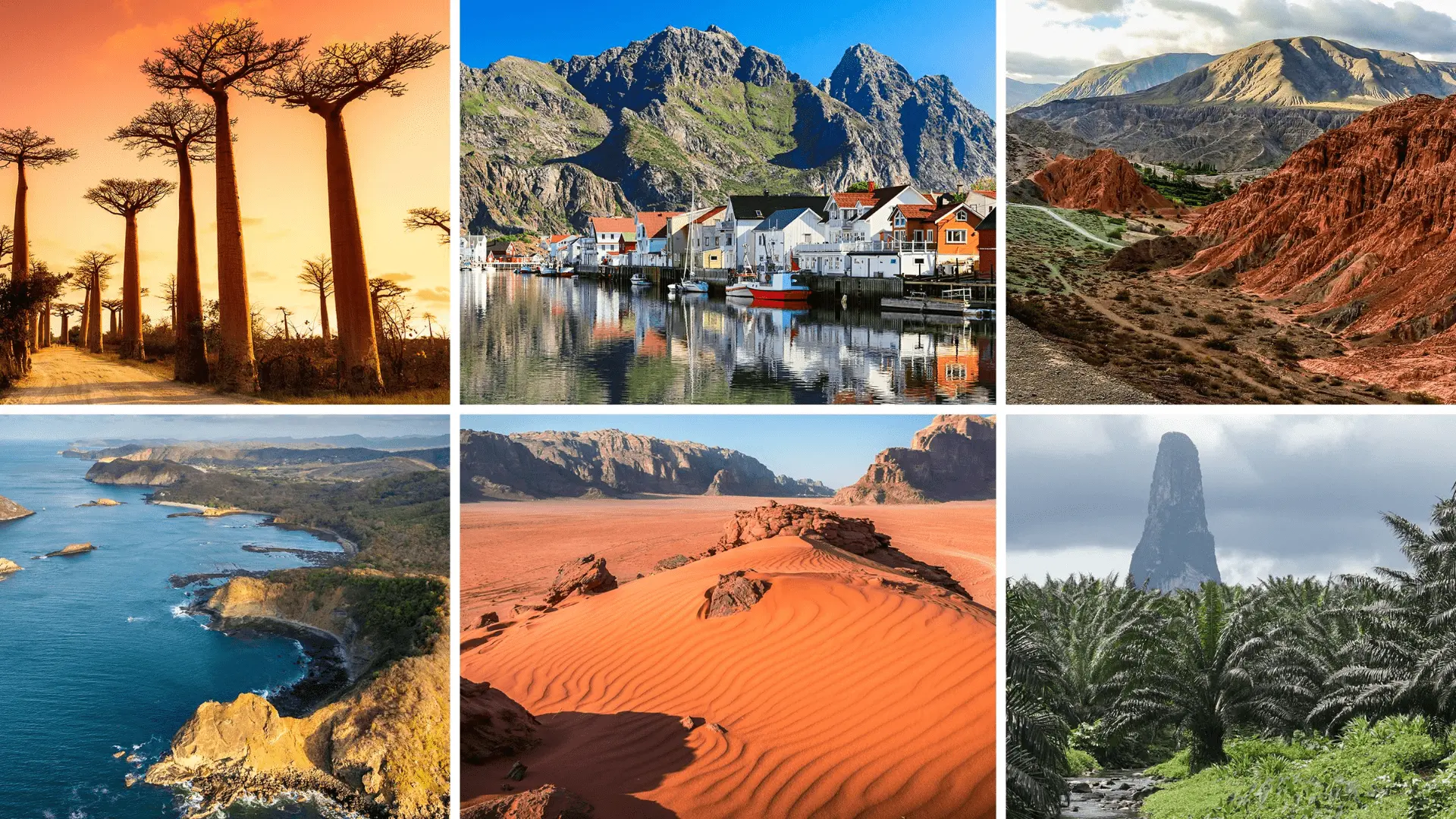Being a wonderful and unique country of breathtaking landscapes and diverse and biodiverse nature, New Zealand has always enticed tourists. From the rich forests to highland and sandy shores Kiwiland presents a gems’ pack of punch. In this article, we take a closer look at what is considered to be the non-cosmetic nature of New Zealand, as well as respond to some fun facts regarding the most famous kiwi bird here. New Zealand being located in Oceania is home to many natural wonders which include the following.
New Zealand is a country filled with many spectacular sights, which make every traveler’s adventure different. Here are some highlights:
1. Fiordland National Park:
Situated in the south-west of the South Island, Fiordland National Park is famous for its impressive goretex which includes the Milford and the Doubtful sound. It has towering cliffs, definitive waterfalls, and calm waters which gives a lot of rationale to be in that place. The park has places such as the Milford Track and the Kepler Track where hiking lovers can have a look at the natural reserved beauty.
2. Aoraki/Mount Cook National Park:
The key attractions of this park are mountaineering, and sightseeing with the magnificent backdrop of Mount Cook, the highest mountain in New Zealand. Glaciers, alpine meadows, mountain peaks, silks of night landscapes, and the glittering of the starry sky – all can be observed in the park. It allows for gaining marvelous views of the park without the need for hours spent on hiking and climbing.
3. Rotorua’s Geothermal Wonders:
Rotorua, situated on the North Islands, has the features of an area with geothermal activity. It has features like geysers, mud pools, hot springs, and others that are able to bubble and give off smoke. This geothermal area has features that can explain the Maori people’s use of these geothermal features and their accommodation.
4. Tongariro National Park:
Situated on the North Island, Tongariro National Park possesses a twofold World Heritage recognition owing to its volcanic terrain. Tongariro Alpine Track is one of the premier one-day tramps globally and comes with ratings passing through volcanic craters, emerald lakes, and outputting steam vents. Volcanoes of the park, including Mount Ngauruhoe where scenes for shooting the Mount Doom were filmed from the “Lord of the Rings” trilogy.
5. Abel Tasman National Park:
Abel Tasman National Park is a park on the Golden Values of the South Island and it is famous for the golden beaches, clear water and capes Abel Tasman Coastal track. The Abel Tasman Coast Track is a famous trail” The Abel Tasman Coast Track can be done as a hiking or a kayaking route, presenting the stunning beauty of nature combined with the opportunity to come face to face with the wildlife of New Zealand.
Here Is What They Have to Say About Kiwi Birds: Kiwi – are these birds native to New Zealand exclusively?
Now, strangely enough, the Kiwi, which is the emblem of New Zealand it seems is really native only to this particular country. Kiwis are birds, nocturnal by nature, and found in New Zealand; they have a long beak with feathers that look like hair. These are nocturnal birds that mostly inhabit the ground, and this is different from most of the bird species that are known.
The Kiwis are native and native animals in New Zealand which denotes that they are not prevalent in any other region in the world. Lack of mammalian predation for millions of years due to the peculiar geographical conditions of the country logically led to the kiwi population growth. However, the arrival of other predators such as stoats, rats, and dogs interjected by humans has led to a decrease in the number of kiwis. Kiwi birds and chicks conservation and breeding still continue to this present day for the protection of kiwi all over the nation.
A common question that BNI New Zealand has come across is “Do Kiwis grow in New Zealand?”
The most widely-known meaning of the term ‘kiwi’ is the flightless bird, however, ‘kiwi’ is also used in order to describe the kiwifruit. Kiwifruit is actually called Chinese gooseberry which was introduced into the New Zealand region early this century. It was suitable for growing in New Zealand’s moderate climate and the country began cultivating kiwifruit and became among the world’s largest exporter of kiwis.
Nowadays, the New Zealand kiwifruit is famous for its quality and taste, although the kiwi green Hayward and the yellow kiwi Zespri SunGold are now commercialized as well. Various crops are grown within this region, however the region is well known for kiwifruit farming.
Well, native New Zealanders and any other individuals with the Kiwi bird as their national symbol certainly do reside in New Zealand.
Indeed, both kiwis as the flightless bird and kiwis as the name for the people of New Zealand – New Zealanders, who dwell in this country. As mentioned, the kiwi bird is a national icon and the specific features associated with it are considered to foster the identity of the New Zealand people. The attempt to preserve the kiwi birds is therefore a strong testimony to the measures being taken by the nation to preserve its natural heritage.
‘Kiwi’ is a colloquial term that refers to the people from New Zealand but sometimes, it is used to refer to the bird native to New Zealand too; does this expression mean that only birds and people from New Zealand are kiwis?
They are native to New Zealand and this makes them unique in the world. They are not a part of any other place in the world without requiring some external assistance. New Zealand and the survival of the bird is interlinked and hence, it is up to the conservationist to ensure that the future generation is also able to get a glimpse of the outstanding bird.
KiwiWay New Zealand: This book can be summarised as a Journey Through Nature.
KiwiWay is a tourism idea that doesn’t just capture the spirit of Kiwi but also captures the idea of traveling around New Zealand while discovering the landscapes and history. They have different programs touring that allow the guests to experience the flow and beauty of New Zealand and make them have interaction with selected features of Maori culture.
KiwiWay Tours
These tours typically include visits to major attractions such as:-
Auckland: Referred to as the “City of Sails,” Auckland is one of the most populated cities located in the region and is characterized by the presence of channels and volcanic islands. Some of the memorial tourist sites include Sky Tower, Waiheke Island, and the Waitemata Harbour.
Rotorua: Currently bordering the geothermal area, Rotorua has geysers, hot springs, and Maori villages providing experiences at Te Puia and the Tamaki Maori Village.
Queenstown: Known as the destination’s being the adventure capital of the world it is possible to Jet boat, bungee jump, ski, and do many other things. Boasting of the backdrop of the majestic Remarkables mountain range and bordering the tranquil waters of Lake Wakatipu, this pulls the crowds.
Wellington: Wellington city with bright arts and cultures, a beachfront, and the Te Papa Museum that is rich in the simplified historical culture of New Zealand.
Kiwi Advertisement: As with people, Nature also likes to glam up at times so here it spruces up itself in its truest sense.
The New Zealand promotion has typically focused on that nation’s glorious, unspoiled environment and thrill-seeking opportunities. From slogans like ‘100% Pure New Zealand’ to assertions that New Zealand is one of the most beautiful countries on earth, the campaign has focused on the country’s concern for the natural environment and its policy on sustainable tourism. These advertisements depict spectacular scenes of rocky and snowy mountains, green forests, sandy and sunny beaches, and other magnificent alternatives and living organisms that the land offers and invites travelers to discover more of the virgin and exotic cultural tourist destination.
Kiwi Advertisement: The Miraculous View of Nature.
This article shows that Maori images are more likely to appear in commercial advertisements for New Zealand that promote its tourism destinations. That is why the advertisement that has ‘100% Pure New Zealand’ phrase which concerns New Zealanders’ attitude to nature and environmentally friendly tourism. Many of these adverts feature the beauty of the New Zealand landscape – mountains, forests, sea, and flora and fauna accompaniments – that Temured invites tourists to come and explore the unspoiled New Zealand and interact with the indigenous people.
Kiwi Nature: The Current Literature: A Commitment to Conservation.
Extensive conservation activities that New Zealand undertakes reveal its determined effort to protect the country’s natural legacy. The country has created many Terrestrial Parks, Marine reserves & Wildlife parks for the conservation of natural forests and animals.
Conservation EffortsPredator-Free 2050: An audacious plan to wipe out the rats, stoats, possums, and other non-native animals to save 2,500 kiwi birds from extinction before the end of 2050.
Kauri Dieback Disease Management: Measures taken to stop the outgoing of a soil pathogen that is dangerous for the kauri trees.
Marine Reserves: Some locations like the Poor Knights Islands or the Hauraki Gulf are protected to protect the transient marine flora and fauna.
Eco-Tourism: New Zealand’s tour operators are also advised to tread as lightly as possible in the country, many of which position themselves as environmentally responsible. It is possible to embark on various activities such as the nature trails where certified guides assist in identifying and explaining the various features that make up the natural world, wildlife tours whereby tourists are not only taken through regions that have various wildlife products such as horns, skins, and feathers but also allowed to visit wildlife sanctuaries, sustainable accommodation where tourists can spend their nights and make necessary contributions towards conservation.
Conclusion
New Zealand is one of the most beautiful countries in the world, and it has an excellent focus on the preservation of the environment that blossomed throughout the whole country. From the lone traveler up for an extreme encounter in Fiordland or who wants to experience the heat and the sulphuric scent in Rotorua, to the group of adventure seekers walking in KiwiWay, travelers are geared to embrace the enchanting geography and historical traditions of this island country. Symbolized by the kiwi bird that stands as one of New Zealand’s most well-known native animals, this work highlights the significance of preserving the world we live in for generations to come. Therefore, do not let the opportunity to go on a Kiwi and explore the natural beauty of New Zealand slip through your fingers.

